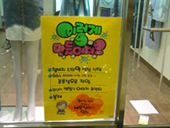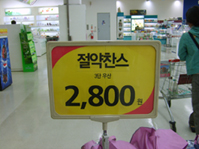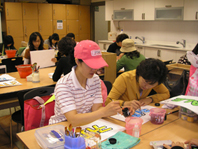 Do you know about POP advertising? Have you ever seen POP advertising? If I ask in this way, most people would answer no, but whenever you go to downtown or to a supermarket, you certainly see lots of POP advertisements. For example, at a store downtown you can see “bargain sales” or “on sale” signs. This is POP advertising. POP advertising is close to our lives and influences our purchases. Now I will examine POP advertising in more detail.
Do you know about POP advertising? Have you ever seen POP advertising? If I ask in this way, most people would answer no, but whenever you go to downtown or to a supermarket, you certainly see lots of POP advertisements. For example, at a store downtown you can see “bargain sales” or “on sale” signs. This is POP advertising. POP advertising is close to our lives and influences our purchases. Now I will examine POP advertising in more detail.
POP is an abbreviation for Point Of Purchase. POP advertising leads consumers to stores and influences them to buy goods. POP advertising is more influential than TV, radio, newspaper, and magazine advertising because it is on-the-spot and effects sales directly. POP advertising first appeared in self-service supermarkets in the United States of America in the 1930s. Consumers can easily get product information without clerks through POP advertising. POP advertising is a means to promote sales. The opening of large size supermarkets made POP advertising more popular.

Since POP advertising gives information on stores and events as well as information on products, there are numerous kinds of POP advertisements including window displays, festival posters, placards, sign boards, banners, stands, mobiles, hangers, price signs etc.

Today, unique hand-made POP advertisements that use a variety of materials are becoming more popular, as are courses for people who want to work in this field or open their own shop. You can easily find such courses in community training centers and on-line courses can be found at www.popbook.co.kr. Recently, a college in Suncheon developed a department of POP advertising.
(Special thanks to prof. Jang Woong for helping with the preparation of this article)








